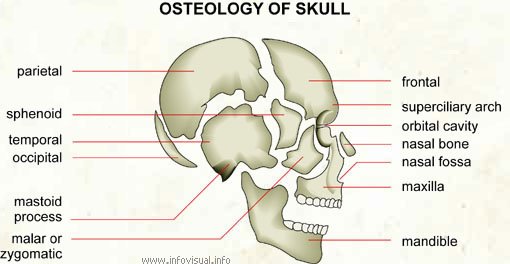As I was telling you in a previous post about forensic anthropology, one of the most important things in the field is the thorough knowledge of osteology – the study of human bones. The job description involves many things, but most of all, it’s bones, and this is what is required in virtually all cases.
So how is it exactly that you can find out information about a body just by studying its bones? I’m going to give a short explanation about how you can determine the main traits, nothing thorough, just so you can get an idea.
Osteology 101 – determining the sex

When trying to figure out the gender of the victim, forensic anthropologists look at the skull and and hip bones, as here lies the most important information. Males usually have a more prominent brow ridge, eyesockets, and jaw, and the difference in hips is fairly obvious – the female’s hips are much wider, made for childbearing.
Next step – height
This part is also relatively simple, if the skeleton is in a decent condition. Practically, all you have to do is reassemble the skeleton and measure the length of significant bones, after which 10-12 cm are added. If some bones are missing, than estimates as accurate as possible have to be made.
Age
This is where it starts to get a little tricky; generally speaking, the older the person, the smoother the skull – but that gives only an approximate result in most cases – a thorough education is necessary for acquiring the ability to do this properly, and thankfully, there are plenty of forensic anthropology schools out there which do just that.. The analysis of the wrist development is an excellent way for determining the age of children aged 13 and younger. At the 17 in males and 20 in females, the lower bone plate and the radius fuse together and soon after, the upper bone plate and radius fuse together. The bone in the body that finishes growing last is the collarbone, which ceases growth at 28 years – these are all good markers. Actually, if the victim is over 30, it becomes harder and harder to give an exact estimate of the age.
Race and weight
Weight is easy to approximate, but hard to pinpoint. All you have to do is measure the wear at certain points of the skeleton. For race, the nose gives the most important information. Caucasian nose holes are triangular, Negroid’s square, and Mongoloid’s diamond-shaped. Negroid femur bones are also straighter than other racial groups. Also, some diseases and conditions can be identified.
The hardest step – occupation
Before doing this, forensic anthropologists look to see if the victim was left handed or right handed; they do this by seeing which side has more muscle attachment. After this, perhaps the hardest work begins, one that isn’t necessary in all cases: guessing the person’s occupation. For example, if the person played an instrument such as a flute or clarinet, the teeth and bones around the mouth will be affected. A carpenter’ss or a roofer’s teeth might be clipped in front where he held nails in his mouth. They can determine a person’s shape
Well, I hope I’ve given you at least a clue of what’s going on in an average day of forensic anthropology.



